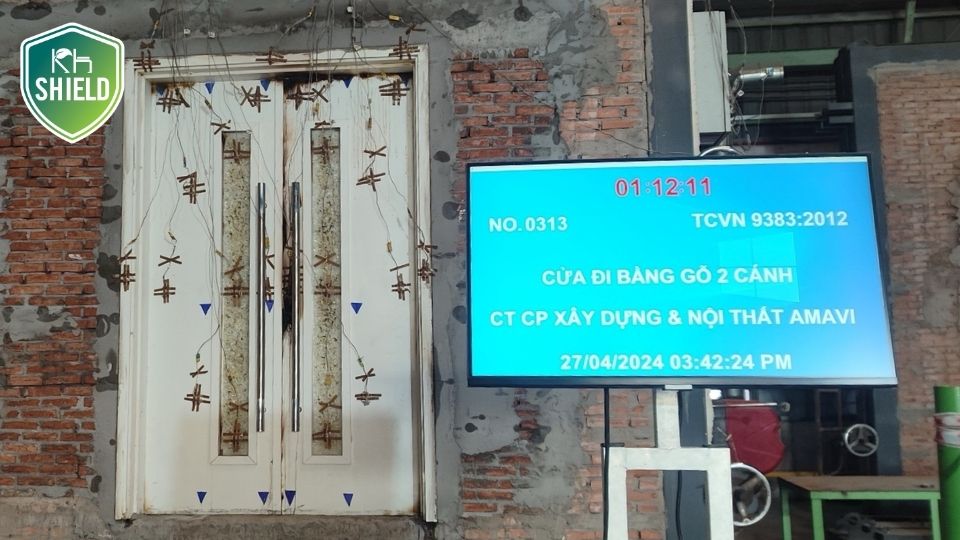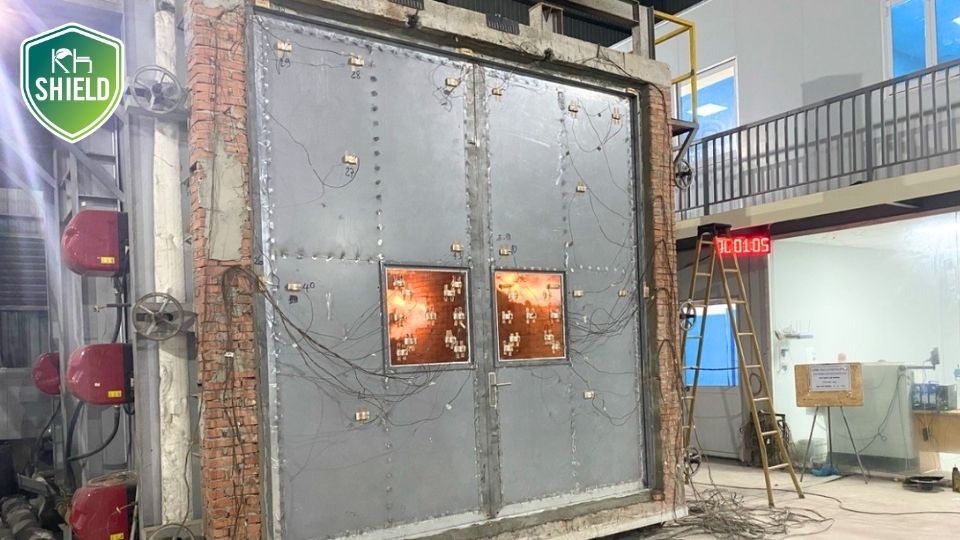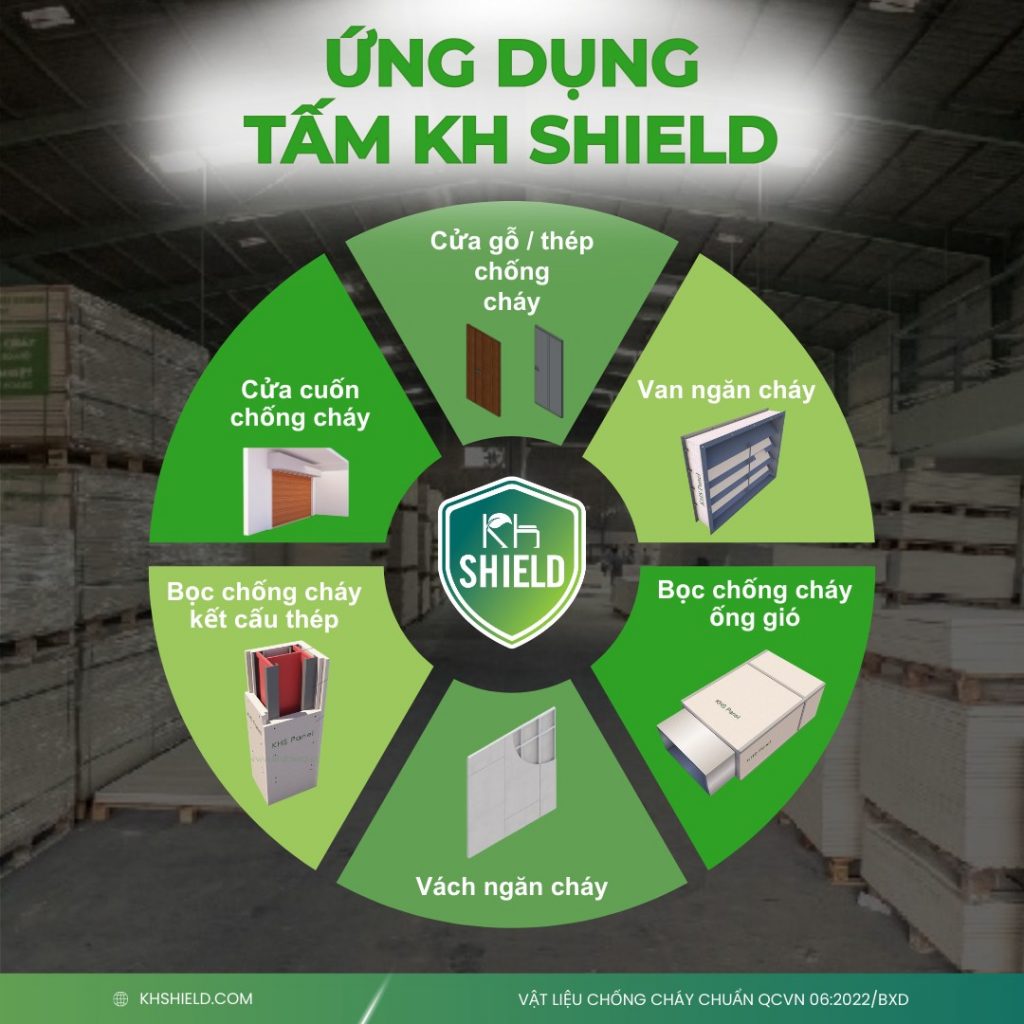
Thematic
Instructions for installing fire doors according to standards
Installing fire doors is an important factor in ensuring fire safety for buildings such as factories, apartments, and high-rise buildings. To achieve maximum effectiveness in preventing the spread of fire and smoke, the installation process of fire doors must comply with strict standards. This article will guide you on how to install fire doors according to standards, from preparation to completion.

Project using KHS panels achieving EI60
Preparation before installing fire doors
NỘI DUNG BÀI VIẾT
- Choosing the right fire door
- Check the door’s standards and certifications
- Prepare the installation location
- Prepare installation tools and equipment
- Install the door frame
- Installing the door into the frame
- Installing the accessories
- Check the operation of the fire door
- Check certification and labeling
- Reporting and record keeping
- Comply with standards and regulations
- Training and instructions for use
- Periodic Maintenance and Inspection
Choosing the right fire door
To ensure that fire doors work effectively, the first step is to choose the right door for the project’s requirements:
- Fireproof steel doors: Suitable for areas with high fire risk, often used in factories and warehouses.
- Fireproof wooden doors: Often used in areas with low fire risk, but still need high aesthetics, such as in office buildings or apartments.
When choosing a fire door, pay attention to factors such as fire resistance time (30, 60, 90 or 120 minutes), door size, and related certifications.
Check the door’s standards and certifications
Before installation, you need to check the door’s fire resistance certifications, such as UL, EI, or TCVN certification. This ensures that the door you choose has been tested and meets safety standards.

EI170 door testing

EI60 steel door testing
Prepare the installation location
The location for installing the fire door must be carefully prepared:
- Check the wall and door frame: The wall and door frame must be durable, without cracks or holes. Make sure that the door frame is firmly attached to the wall, and the frame size must match the size of the fire door.
- Clean the installation area: The installation area must be clean and free of obstacles to ensure a smooth installation process.
Prepare installation tools and equipment
You need to fully prepare the necessary tools and equipment such as drills, screwdrivers, hammers, measuring tapes, and accessories such as hinges, handles, and fixing screws.
Fire door installation process
Install the door frame
- Measure and mark the installation location: Use a measuring tape to determine the exact location of the door frame on the wall. Mark the fixing points to ensure the door frame is installed in the correct position.
- Mounting the door frame: Place the door frame in the marked position and use the fixing screws to secure the frame to the wall. Make sure that the door frame is mounted evenly and is not skewed.
- Checking the stability: After mounting the frame, check the stability of the door frame by pushing and pulling with your hands. If the door frame does not wobble or move, you can continue with the next steps.
Installing the door into the frame
- Attaching the hinges: Attach the hinges to the door first, then install the door into the frame. Make sure that the hinges are securely attached and that the door can open and close smoothly.
- Aligning the door: After installation, you need to adjust the door so that it closes tightly against the frame, without large gaps. This helps prevent smoke and fire from spreading through the gaps in the event of a fire.
Installing the accessories
- Installing the door handle and lock: The door handle and lock should be installed in a convenient location, making it easy to use in an emergency. Make sure the door lock works well, is not stuck or difficult to open.
- Install auxiliary devices: If the door has an automatic closing system or built-in fire alarm devices, you need to install and connect them according to the manufacturer’s instructions.
Check and complete
Check the operation of the fire door
After completing the installation, the entire system needs to be checked:
- Check the ability to close: Make sure the door closes completely to the frame, without large gaps. The door must operate smoothly, without jamming or making loud noises when opening/closing.
- Check the accessories: Check the operation of the handle, door lock, and other auxiliary devices. Make sure all devices are working properly and meet safety requirements.
Check certification and labeling
After checking the operation of the door, it is necessary to re-check the relevant certifications and label the fire door according to regulations. This label typically includes information about the fire resistance time, applicable standards, and the door serial number.
Reporting and record keeping
After installation is complete, a report on the installation process must be prepared, including information about the door type, installation location, and test results. This report must be kept for future inspections by the competent authority.
Important notes during the installation of fire doors
Comply with standards and regulations
Fire door installation must strictly comply with state standards and regulations. Improper installation can reduce the effectiveness of the fire door, causing danger in the event of a fire.
Training and instructions for use
Employees in the factory or building must be trained and instructed on how to use the fire door, especially in an emergency. This helps ensure that everyone can use the door safely and effectively when needed.
Periodic Maintenance and Inspection
After installation, fire doors need to be periodically maintained and inspected to ensure that they are in good working condition. Periodic maintenance includes checking the tightness, opening/closing ability, and operation of auxiliary devices.
Update the latest topic
Update highlights

Consultation on fire and explosion prevention solutions














